Island Life: Diving Cebu and Palawan
February 2011
Encompassing more than 7000 islands in the Western Pacific Ocean, the Philippines' boundaries extend from Taiwan in the north, to Borneo and the Sulu Sea in the south.
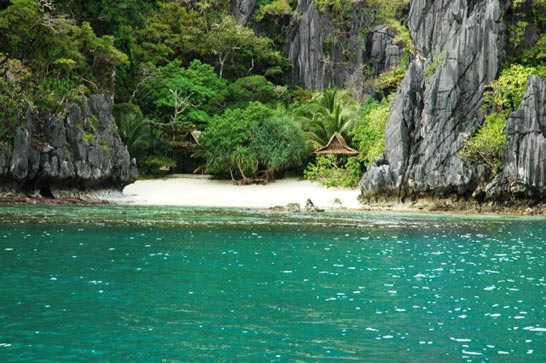
Because most of these islands lie within the Ring of Fire and the Typhoon Belt of the Western Pacific Ocean, conditions at times, can change quite suddenly and dramatically.
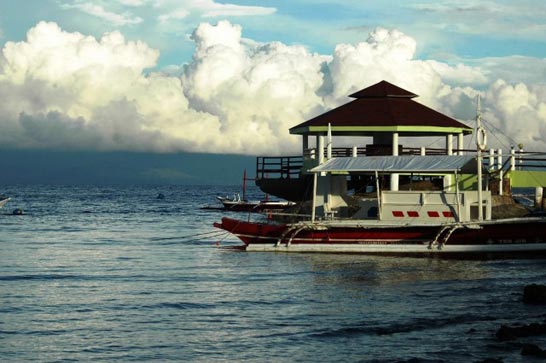
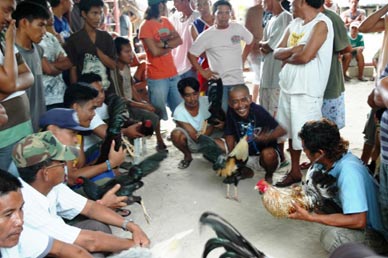 Culture
can be as complex as the forces of nature. The area has been
inhabited for at least 30,000 years. About 120-170 languages
are spoken over 26 ethnic regions throughout the islands.
Tagalog and English are the official languages. Culture
can be as complex as the forces of nature. The area has been
inhabited for at least 30,000 years. About 120-170 languages
are spoken over 26 ethnic regions throughout the islands.
Tagalog and English are the official languages.
As much as the "island" aspect of the Philippines has enabled cultural diversity,
it has equally prevented its complete unification. On the
other hand, this aspect has also prevented long-term occupation
by other countries. The Spaniards, Americans, and Japanese
have all tried and failed.
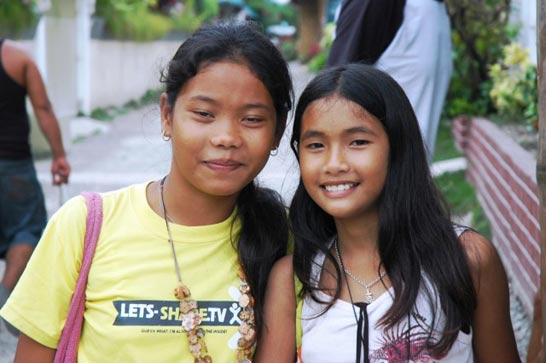
Definitely the greatest
assets of the Philippines are the biodiversity of nature,
the countless islands, and the vast ocean in between. Hidden
lagoons, waterfalls, and cool cloud-topped mountains are all
here.
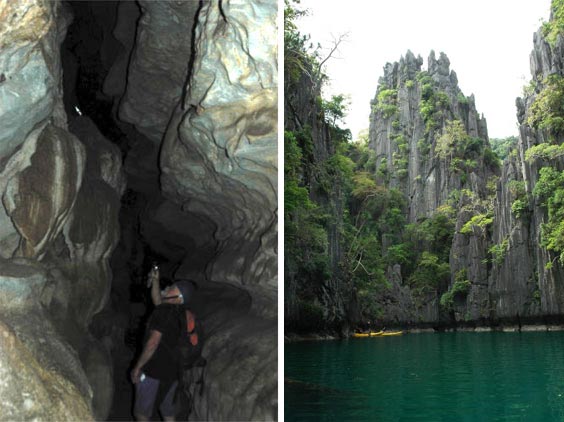
It
is also a diver's paradise with world-class conditions and
variety. An entire fleet of sunken Japanese wrecks lie off
the coast of Coron. Hammerheads
school in the hundreds off of Apo Reef. Giant Mantas, migrating
whales, and aquarium conditions exist in many other as yet
unexplored areas.
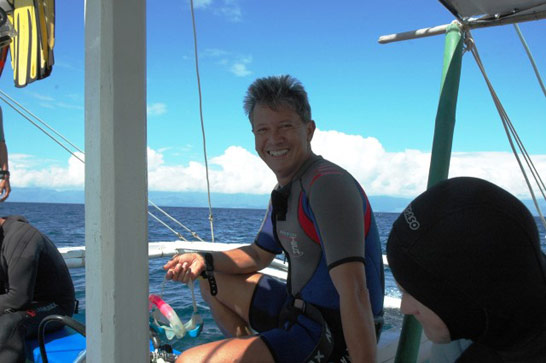
For
divers, coral reefs are treasured gardens where most marine
life exists, and the Philippines are right in middle of the
reef belt that extends from here to the Great Barrier Reef
in the Coral Sea.
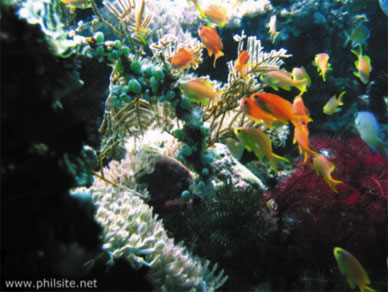
Tourism
dollars generated from the development of scuba diving sites
has benefited both the local people and the environment. Many
of the locals are qualified dive masters, instructors and
owners of dive shops.
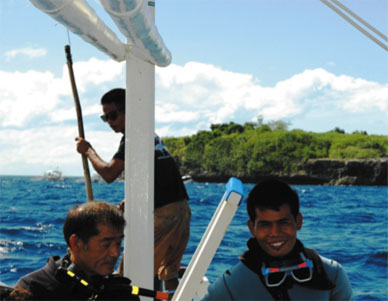
Cyanide
and dynamite fishing practices, which utterly destroy reef
ecosystems, although not eliminated, have been greatly reduced.
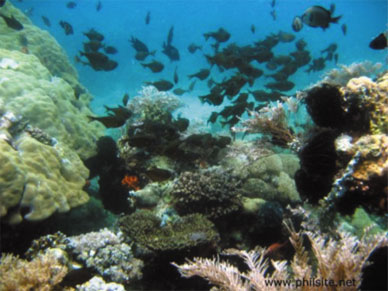
Increased
focus and raised awareness for responsible marine ecology,
helped spear-headed the drive for protected marine reserves
such as Tubbataha Reef.
Life is as old as the ocean. And much like life, the ocean only reveals itself to those brave enough to venture deeper. Even so, neither the deep nor life simply gives up its secrets because we happen to visit for a few hours.
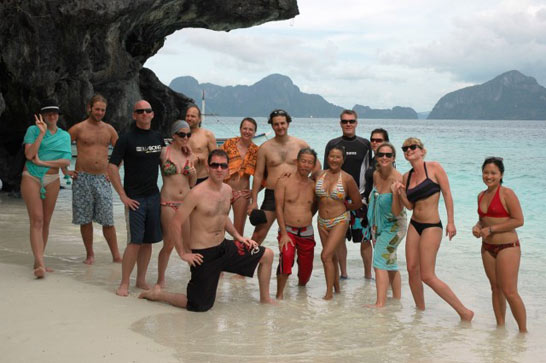
Post Script
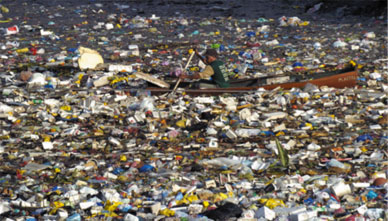
Plastic
wraps most every little thing we buy today. It's so ubiquitous
it's invisible. Have you ever wondered where all that wind-swept,
thoughtlessly discarded plastic trash ends up? Think about
it. The Earth is 2/3 ocean, so there is a good possibility
that 2 out of 3 pieces of plastic will end up there; and it
has.
There is an island of plastic the size of Texas, and twice
the size of France, collecting in the North Pacific Gyre.
It was only recently been discovered in the past 10 years
because sailors usually avoid this area where the currents
are circular. See: The
Trash Vortex
I remember hiking through a virgin jungle up a clear fresh river in Venezuela 30 years ago to a spectacular waterfall only to find plastic bleach bottles and disposable diapers floating at the base.
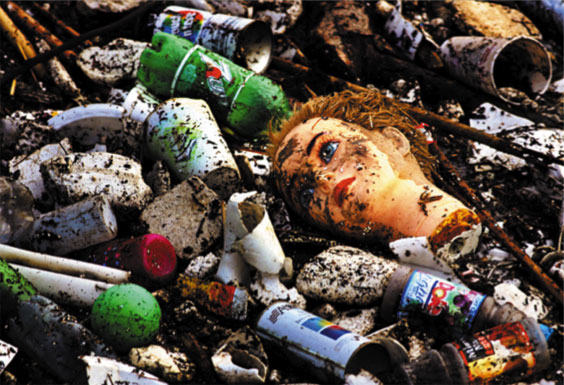
photo courtesy reusablebags.typepad.com
For 80,000 years people were a balanced part of the "eco" fabric of this planet until the industrial revolution began some 250 years ago. In this comparatively brief time, it seems that the great modernizing revolution has become a horrific war against nature. Our fascination for invention coupled with a "prosumer" ideology, and the exploitation of oil, has drastically altered our planet, and now ironically threatens our very existence.
photo courtesy Danielle Press

Life is profuse and will flourish like
mad ... if given an iota of a chance.
Please use alternatives to plastic, and please recycle; don't
litter.
For information on large resolution and more photos, contact randy@travelsongs.com
Previous entry: Namhae Island: Bikes and Buddhist Temples
|